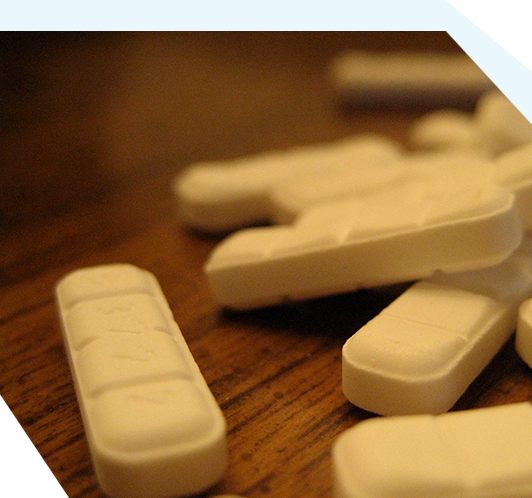Benzodiazepines
Rehab Near Me Addiction, Effects,
and Treatment in Landover Maryland
Find A Benzo Rehab Near You
Benzodiazepine abuse is much more common than you may think. If left untreated, it can affect a person’s body, mind, and even their relationships with other people. It may even lead to more serious problems down the line, such as addiction and drug dependence. In some of the worst cases, a benzodiazepine overdose is also a possibility, and this could be deadly.
But before we can address the problem with benzodiazepine abuse, we must first take a look at what it is, how it is used, and why some people misuse it. Here we will also explore the effects of drug addiction, how abusing benzodiazepines can affect a person, and how treatment works for addicted individuals. Let’s take a closer look.
What are Prescription
Benzodiazepines?
Benzodiazepines are a type of medication known as prescription tranquilizers. Also known as benzos, these medications are prescribed for a wide variety of uses, mostly involving their sedative effects. Valium and Xanax are popular examples of benzodiazepines. Other examples of benzos are Ativan, Klonopin, and Restoril. LEARN MORE


How Do Prescription
Benzos Help with
Anxiety Disorders?
Benzodiazepines are the most common medications for anxiety disorders. These drugs can help fight the symptoms of anxiety, including panic attacks and extreme worry.
Benzos enhance the activity of the gamma-aminobutyric acid (GABA) neurotransmitter, LEARN MORE
Benzodiazepines for
Alcohol Withdrawal
For a lot of people going through addiction treatment for alcoholism, one of the most difficult challenges of getting sober is alcohol withdrawal. Withdrawal has always been known as one of the most uncomfortable and painful parts of the recovery process. It can sometimes even be fatal. LEARN MORE


What Happens
When You Abuse
Prescription Benzos?
Aside from the fact that benzodiazepines can make a person feel calm and relaxed, it is also widely abused because of its availability. Benzos are prescription medications, LEARN MORE
Prescription
Benzodiazepine Addiction
Addiction is characterized by the compulsive need to take a certain drug or substance. It is described as an inability to control one’s intake of a particular substance. In this case, a benzodiazepine addiction is the inability to control your intake of this prescription medication. LEARN MORE

Treatment for Prescription Benzodiazepine
Addiction and Drug Abuse
Similar with other drugs, addiction treatment for benzodiazepines involves removing the drug from the patient’s system first. This process is called medical detox. During this stage of treatment, Benzo Rehab will help it
About Landover
Rehab Treatments In Landover Maryland
- Alcohol Addiction Landover
- Alcohol Detox Landover
- Alcohol Rehab Landover
- Alcohol Rehab for Veterans Landover
- Finding the Best Alcoholism Rehab Near Me in Landover
- AA Free & Confidential Alcoholics Anonymous Helpline Landover
- Benzodiazepines Rehab Near Me Landover
- Christian Drug Rehab Landover
- Drug Rehab-addiction Treatment Centers Near You Landover
- Dual Diagnosis Treatment Centers Near You Landover
- (EAP) Employee Assistance Programs Landover
- Fentanyl Landover
- Find 30-Day Inpatient Drug Rehabs Near You! Landover
- Find 60 Day Inpatient Drug Rehabs Near You! Landover
- Find 90 Day Inpatient Drug Rehabs Near You! Landover
- Hydrocodone Landover
- Inpatient Drug and Alcohol Rehab Near Me Landover
- Inpatient Drug Rehab Treatment Program Landover
- Luxury Drug & Alcohol Addiction Treatment Centers Landover
- Mental Health, Addiction, and Drug Rehab Landover
- NA Hotline, Narcotics Anonymous 24 Hour Hotline Landover
- Online Therapy|Mental Health|Substance Abuse|Dual Diagnosis Landover
- Mental Health Online Therapy | Teletheraphy Landover
- Outpatient Drug Rehab Near Me Landover
- Oxymorphone Landover
- Prescription Drugs Landover
- Student Drug Rehab Landover
About Maryland
Browse by State
- ALABAMA
- ALASKA
- ARIZONA
- ARKANSAS
- CALIFORNIA
- COLORADO
- CONNECTICUT
- DELAWARE
- FLORIDA
- GEORGIA
- HAWAII
- IDAHO
- ILLINOIS
- INDIANA
- IOWA
- KANSAS
- KENTUCKY
- LOUISIANA
- MAINE
- MARYLAND
- MASSACHUSETTS
- MICHIGAN
- MINNESOTA
- MISSISSIPPI
- MISSOURI
- MONTANA
- NEBRASKA
- NEVADA
- NEW HAMPSHIRE
- NEW JERSEY
- NEW MEXICO
- NEW YORK
- NORTH CAROLINA
- NORTH DAKOTA
- OHIO
- OKLAHOMA
- OREGON
- PENNSYLVANIA
- RHODE ISLAND
- SOUTH CAROLINA
- SOUTH DAKOTA
- TENNESSEE
- TEXAS
- UTAH
- VERMONT
- VIRGINIA
- WASHINGTON
- WEST VIRGINIA
- WISCONSIN
- WYOMING

